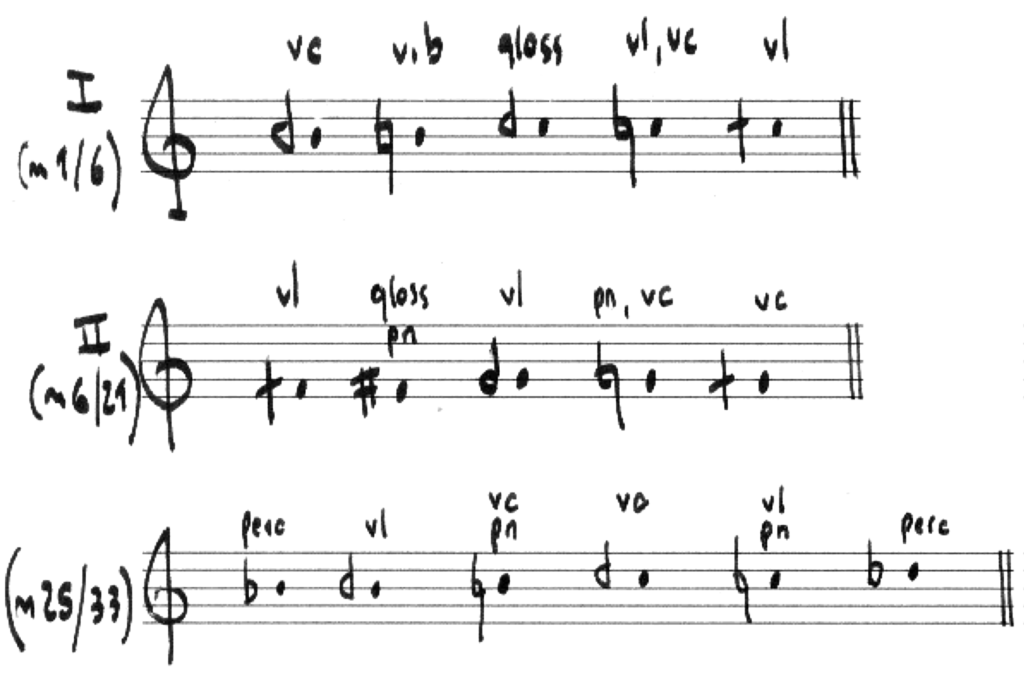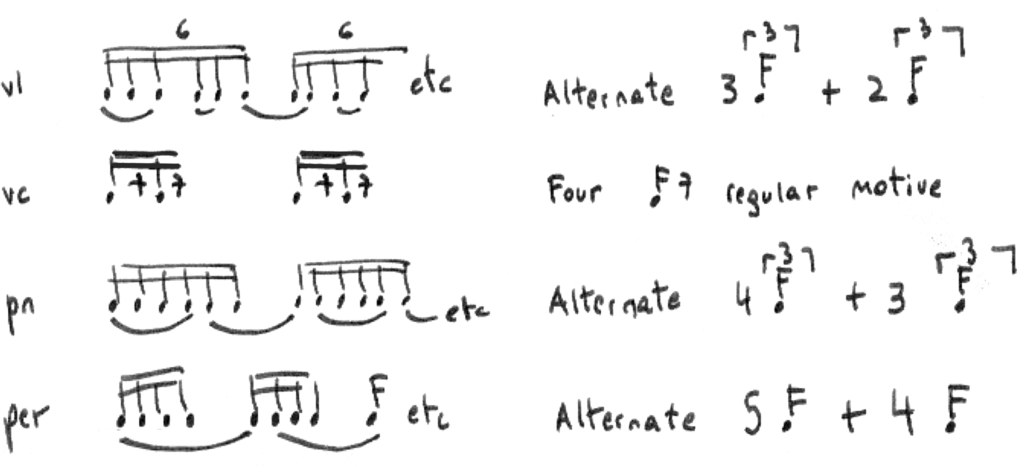for voice, trumpet, violin, cello, piano, percussion and wine glasses (or DX7)
This piece is based on the idea of suggestion rather than revelation. The music operates in the outer limits of perception; events are sensed rather than clearly perceived, contour prevails over detail, the respiration of music is whispered. The narrow dynamic range, the restricted instrumental timbre and the blurred effect of the rhythmical combinations aim at creating music that is slightly ‘out of focus’. Melodies are masked, melos being more important than the melody itself. “Casi cerca” (almost close) is related to something possible to perceive but impossible to touch. The word ‘casi’ (almost) is the thin dividing line that keeps these two dimensions of distance and closeness apart.
1) There is a main melody presented at the beginning of the piece by the soprano (measures 6 -9).
In m.34 the same melody is spread among the instruments. Some instruments are duplicating some notes of this single melody, so these duplicated notes should be coordinated and sound as one.
In m. 41 the same melody is played by piano harmonics.
2) The harmony of the piece is based on three regions of quartertone clusters.
Clusters distribution by instruments (there are some duplicated notes)
Ex. 1

3) Even the timbres of the piece are similar, everyone should have a personal color. (ex. vl arco ordinario; vc sul ponticello different from vibraphone and bocca chiusa of soprano)
4) There are repeated rhythmical patterns usually alternating two pitches (the pitch interval in quarter tones is indicated in the score: ¼, ½, etc, with a square below the staff).
From the beginning of the piece.

Progressively the instruments are changing the length of patterns, but always going from one pattern to another.
Ex. 3 From measure 25

Here most of the patterns alternate two notes of different duration (3+2, 4+3, 5+4, except for the cello that keeps regular.
5) The entrances of all occurrences should be perfectly coordinated.
o m.6, 5th beat- tp. and piano together with sop. and wine glasses pitch change-
o m.16, 3rd beat- sop and tp
o m.20, 4th beat-sop and tp.
o m.22, 3rd beat- sop, vl, vc and perc.
o m.30 tutti
o etc…
Trumpet and percussion in sixteens play always the same motive starting in m.12 but one of the instruments is rhythmically slide (one, two or three sixteens), so the second instrument works like an echo of the first.

• Audio
• Interview/article
• Program notes/related works
Send download link to: